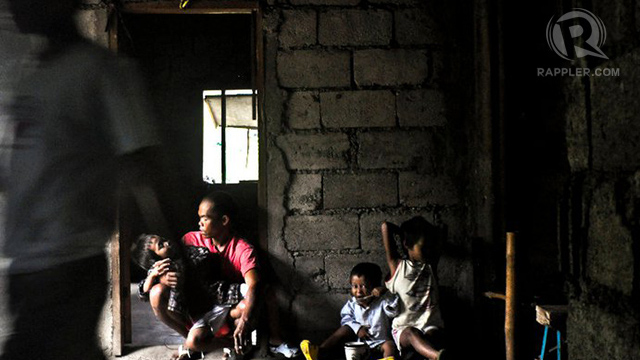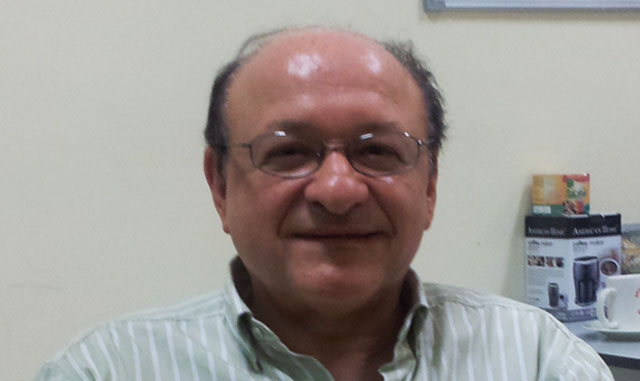SUMMARY
This is AI generated summarization, which may have errors. For context, always refer to the full article.

MANILA, Philippines – The Philippines’ Pantawid Pamilyang Pilipino Program (4Ps) “continues to be working well” in improving the lives of millions of Filipinos through conditional cash grants, an international expert on social protection said in early October.
AusAID consultant Dr Tarcisio Castañeda recently visited the country to review 4Ps, the conditional cash transfer (CCT) scheme run by the Department of Social Welfare and Development (DSWD).
Castañeda described 4Ps as “remarkable,” given that it is a young program that has already seen an increase in its budget and in the number of beneficiaries.
“At this moment, the Philippines’ program has advanced so much that it could provide some lessons from some countries,” he said. The primary design of 4Ps initially focused on education and health, but now includes services such as feeding and livelihood programs, scholarships and skills training.
“I was here (in the Philippines) 6 months ago, and at that time I did a similar assessment. Most of the recommendations have been put in place,” he said. “I have found a lot of very highly, technically capable people who really know the program, [who] understand the rules that they are implementing to the best of their capacity.”
The 4Ps is considered the government’s “anti-poverty centerpiece” or flagship anti-poverty program. Cash incentives are distributed to poor households on the condition that parents regularly bring their children to preventive health check-ups and enroll them in school. Pregnant beneficiaries are required to seek pre- and post-natal care, and should be attended by a health professional when giving birth.
As of June 2013, the program has nearly 3.93 million registered households. Operations run in all 17 regions, covering 79 provinces, including 1,484 municipalities and 143 major cities, according to the DSWD.
The proposed 2014 budget, if approved, will give the DSWD a 40% budget increase or P78.9 billion, which will be allocated to the department’s programs, including 4Ps.
Reactions to CCT concerns, criticism
The consultant’s assessment coincided with the positive evaluation and support of international agencies like the World Bank. A recent World Bank report said 4Ps was “on track to meet the goals of keeping children healthy and in school” and showed high compliance of beneficiaries. (READ: World Bank gives CCT thumbs up)
In a DSWD press release on Sunday, October 20, United Nations (UN) Undersecretary and General and Associate Administrator of the United Nations Development Programme (UNDP) Rebeca Grynspan said that 4Ps should “not be judged in the short term but after ten years when it can demonstrate success in breaking the intergenerational cycle of poverty.”
The UN official stressed that the program must be supported as it gives children of poor households a chance to finish school through incentives. But Grynspan also emphasized the importance of releasing evaluation or assessment reports of CCTs so that the public will be aware of how these programs are being managed.
These comments have given DSWD some encouragement, considering that the 4Ps has been criticized as a dole-out strategy that has failed to pull Filipinos out of poverty. But for Castañeda, CCTs are a “work in progress” and do not attempt to solve poverty immediately, but instead aim to alleviate it by providing social protection tools that will help many poor households in the long run.
“The most important objective of CCT is to break the transition of poverty across generations,” he stressed. “If you go to a village or a city and you see these poor families, you will need to recognize that these children will not be out of poverty for a long, long, long time. So CCT, by connecting to other key services, like education and health…like training and others, can have [an] impact not on the poverty today, but poverty 10 to 20 years from now.”

On the question of whether a change in administration will affect the continuity of 4Ps, Castañeda said political transition would not be a critical threat so long as the program remains credible, efficient and transparent. Funds must be used properly and independent of political considerations. He cited the experiences of Mexico and Colombia, which have gone through several changes in administration but have retained their CCT programs.
But he acknowledged that in some cases in other countries, CCT programs have been used for corruption and manipulation, particularly through the misuse of funds and listings for political purposes. (READ: Protecting ‘Pantawid Pamilya’ from ‘epals’) Also (READ: Why we should support the 4Ps)
Corruption, partisan politics?
4Ps has been mired in controversy amid concerns that 4Ps could be vulnerable to corruption and partisan politics. An expert even warned last year that the program could be used for vote-buying during the 2013 mid-term elections.
In November 2012, the Commission on Audit (COA) released a report that found critical problems in the implementation of the program, including a decline in beneficiaries in 2011, billions in unaccounted disbursements, deficient supervision in household registration and questionable use of funds. A COA-conducted survey also found that not all beneficiaries were really poor, yet were included in the program.
Castañeda remains optimistic about the progress of 4Ps, though he also hopes for improvements in the long run, particularly an increase in the quality of services provided by the program. – Rappler.com
Add a comment
How does this make you feel?
There are no comments yet. Add your comment to start the conversation.